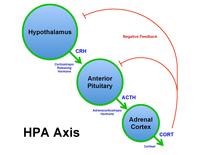
Photo from wikipedia
BACKGROUND Early diagnosis of acute posttraumatic osteomyelitis (POM) is of vital importance for avoiding devastating complications. Diagnosing POM is difficult due to the lack of a highly specific and sensitive… Click to show full abstract
BACKGROUND Early diagnosis of acute posttraumatic osteomyelitis (POM) is of vital importance for avoiding devastating complications. Diagnosing POM is difficult due to the lack of a highly specific and sensitive test, such as in myocardial infarct, stroke and intracranial bleeding. Serum inflammatory markers, C-reactive protein (CRP), procalcitonin (PCT), white blood cells (WBC) can support clinical findings but they are not able to differentiate between inflammatory response to infection and the host response to non-infection insult with high specificity and sensitivity. AIM The objectives of the study were to investigate whether the biochemical and immunoinflammatory patient profile could facilitate postoperative monitoring, guide the antibiotic treatment and timing of revision surgery. PATIENTS AND METHODS This prospective nonrandomised cohort study included 86 patients after high-energy injury to the shin requiring primary surgical treatment (open or closed reduction and internal fixation of tibial fracture). Values of the biochemical and immunoinflammatory profile were measured on admission (ADD), first postoperative day (POD1) and fourth-postoperative day (POD4). RESULTS We discovered on our sample that the development of POM is associated with increased CRP on ADD, POD1 and decreased albumins on POD4. Further studies are needed to prove that these differences can be useful in diagnosing the risk of infection. The assessment of other important risk factors such as: the extent of soft tissue damage, multiple fractures, transfusion rate, need for conversion primary external fixation to intramedullary (IM) nailing or locking plate fixation can empower our clinical judgment of POM. CONCLUSIONS We can improve prediction of posttraumatic osteomyelitis by using the perioperative inflammatory biomarker CRP in combination with postoperative albumins levels and other associated independent risk factors.
Journal Title: Injury
Year Published: 2019
Link to full text (if available)
Share on Social Media: Sign Up to like & get
recommendations!